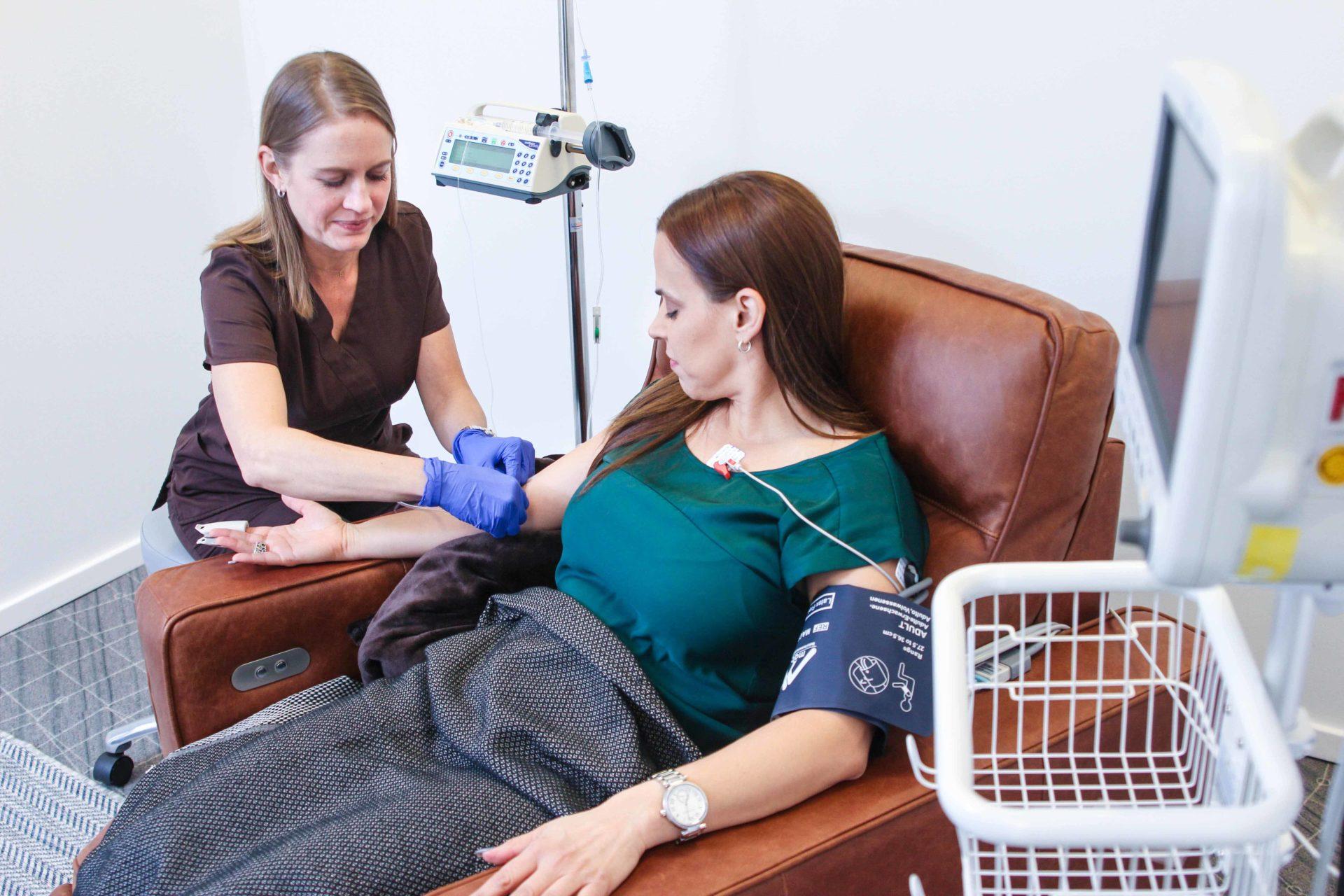Blog
Ketamine infusion for pain

Unlocking New Avenues in Pain Management: The Role of Ketamine Infusion
In the realm of pain management, the quest for innovative and effective treatments remains a pressing priority for both patients and healthcare providers. As the medical community grapples with the complexities of chronic pain, traditional approaches often fall short, leaving individuals in search of relief. Amidst this landscape, a novel contender has emerged—ketamine infusion therapy. Originally recognized for its anesthetic properties, ketamine is now gaining traction as a potential game changer in the management of pain. This article explores the scientific underpinnings, therapeutic applications, and the growing body of evidence supporting ketamine infusion as a viable option for those enduring debilitating chronic pain. As we delve into the nuances of this treatment, we aim to illuminate its benefits, challenges, and the transformative potential it holds for individuals seeking relief on their journey to recovery.
/>
Understanding the Mechanism: How Ketamine Infusion Alleviates Pain
Ketamine, originally developed as an anesthetic, has gained attention in recent years for its potential to alleviate pain through a multi-faceted mechan
ism. When administered via infusion, it interacts with the brain’s neurotransmitter systems, particularly the glutamatergic system. Ketamine acts as an antagonist to N-methyl-D-aspartate (NMDA) receptors, effectively reducing the transmission of pain signals and inhibiting the brain’s persistent pain pathways. This blocking action promotes a unique rebalancing in neurochemistry, allowing for enhanced neuroplasticity, which can lead to long-term changes in how pain is perceived and managed.
Additionally, ketamine infusion triggers the release of various neuroactive substances, such as brain-derived neurotrophic factor (BDNF), which plays a crucial role in neuronal health and resilie
nce. This influx not only helps to mend damaged neural pathways but also fosters emotional wellbeing, alleviating anxiety and depression often associated with chronic pain. To illustrate these effects, consider the following table that pairs mechanisms with their outcomes:
| Mechanism | Outcome |
|---|---|
| NMDA receptor antagonism | Reduced pain signal transmission |
| Increased BDNF release | Enhanced neuronal health and resilience |
| Neuroplasticity stimulation | Long-term reduction in pain perception |
This combination of immediate pain relief and potential for long-term improvement makes ketamine infusion a captivating option in pain management paradi
gms. Understanding these mechanisms allows healthcare providers to tailor interventions precisely and offer hope to those suffering from intractable pain conditions.
Evaluating Benefits and Risks: A Comprehensive Overview of Ketamine Therapy
When considering ketamine therapy for pain management, it is essential to weigh its numerous benefits against potential risks. <strong>Ketamine, originally developed as an anesthetic, has been repurposed for chronic pain due to its unique ability to alter pain perceptions and create a rapid antidepressant effect. Patients undergoing ketamine infusions often report significant relief from conditions such as fibromyalgia, neuropathic pain, and complex regional pain syndrome. The therapy may provide benefits such as:
- Rapid Relief: Unlike traditional pain medications, ketamine can yield immediate effects, often within hours.
- <strong>Reduction in Opioid Use: Patients may find they can reduce or eliminate opioid consumption, mitigating the risks associated with long-term opioid therapy.
- Addressing Co-morbid Depression: Ketamine’s rapid antidepressant properties can simultaneously address depression and pain, benefiting those with co-occurring conditions.
However, it is crucial to recognize the possible risks tied to ketamine usage. Some patients may experience side effects such as dissociation, dizziness, or nausea during and after treatment. Additionally, the long-term implications of frequent ketamine infusions are still under investigation, raising questions about potential neurotoxicity and dependency. A comprehensive understanding of both advantages and drawbacks is vital for informed decision-making. Possible risks of ketamine therapy include:
- Psychological Effects: Symptoms may include confusion and vivid dreams, which some patients find unsettling.
- Potential Abuse: There is a risk for misuse in those with a history of substance abuse.
- Cost and Accessibility: Ketamine treatment can be expensive and may not be covered by insurance.
Patient Experience: What to Expect During a Ketamine Infusion Session
During a ketamine infusion session, patients can expect a tailored experience aimed at minimizing discomfort while maximizing therapeutic effects. Upon arrival, you will be greeted by a team of medical professionals who will guide you through the process. Important aspects of the session include:
- Initial Assessment: Before the infusion starts, a thorough evaluation of your medical history and pain levels will occur to ensure the treatment is appropriate.
- Comfortable Environment: Infusions typically take place in a quiet and relaxing room designed to promote tranquility, potentially with calming music to enhance your experience.
- Monitoring: Throughout the session, your vital signs will be continuously monitored, allowing healthcare providers to react swiftly to any unexpected changes.
The infusion itself is delivered via an intravenous (IV) line, allowing precise control over the dosage. While the length of the infusion can vary, most sessions last between 40 minutes to an hour. During this time, patients may experience:
- Altered Perceptions: Some patients report mild perceptual changes or a sensation of floating, which are side effects that usually resolve quickly.
- Calmness or Relaxation: Many find themselves feeling profoundly relaxed, which can significantly enhance the therapeutic benefits.
- Personal Reflection: The unique properties of ketamine can also facilitate introspection or emotional breakthroughs, which may aid in cognitive and emotional healing.
| Experience | Duration |
|---|---|
| Infusion Time | 40 – 60 minutes |
| Monitoring | Throughout the session |
| Post-Infusion Observation | 30 – 60 minutes |
Guidelines for Success: Combining Ketamine Treatment with Holistic Pain Management Strategies
To maximize the efficacy of ketamine infusion therapy for pain relief, it’s essential to adopt a comprehensive approach that integrates holistic strategies. This can significantly enhance the therapeutic outcomes and improve overall well-being. Key components to consider include:
-
- <l
i>Mindfulness Practices: Techniques such as meditation and yoga can reduce anxiety and improve emotional resilience, complementing the pain relief effects of
-
- ketamine.
- Nutritional Support: A balanced diet rich in anti-inflammatory foods may bolster the immune system and support recovery during treatment. <l
i>Physical Therapy: Engaging with a physical therapist to develop a customized exercise routine can help strengthen the body, increase mobility, and allev
- iate pain.
- Alternative Therapies: Incorporating acupuncture, chiropractic care, or aromatherapy can provide additional avenues for pain management.
Monitoring progress is crucial in assessing the effectiveness of this combined approach. Keeping a detailed journal can help track not only pain levels but also emotional and physical states throughout the treatment period. A suggested tracking table may include:
</table>By closely monitoring both pain levels and emotional well-being, patients can better understand their responses to ketamine treatment alongside holistic pain management methods, fostering a more tailored and effective healing journey.In SummaryIn the evolving landscape of pain management, ketamine infusion therapy emerges as a beacon of hope for those who find themselves trapped in the cycles of chronic discomfort. While the path to understanding and utilizing this novel treatment is still being paved, the potential benefits it offers are hard tooverlook. As the medical community continues to explore the intricacies of this multifaceted drug, patients are encouraged to engage in informed discussions with their healthcare providers.Navigating the complexities of pain can be both daunting and isolating, but with emerging therapies like ketamine infusion, there is a growing arsenal of options designed to improve quality of life. Each individual’s journey is unique, urging a personalized approach to treatment that considers not only the physical but also the emotional aspects of living with pain.As we look toward the future, it is essential to stay informed about the developments in ketamine therapy and to advocate for holistic approaches that encompass both body and mind. Whether you are a patient seeking relief or a practitioner exploring innovative methods, the promise of ketamine infusions stands at the crossroads of science and compassion, ready to redefine the narratives of pain management for many.
| Date | Pain Level (1-10) | Mood (1-10) | Holistic Strategy Used |
|---|---|---|---|
| 01/01/2023 | 6 | 5 | Meditation |
| 01/02/2023 | 7 | 6 | Yoga |
| 01/03/2023 | 5 | 7 | Acupuncture |





